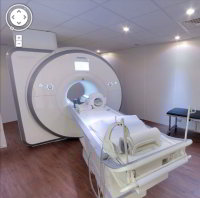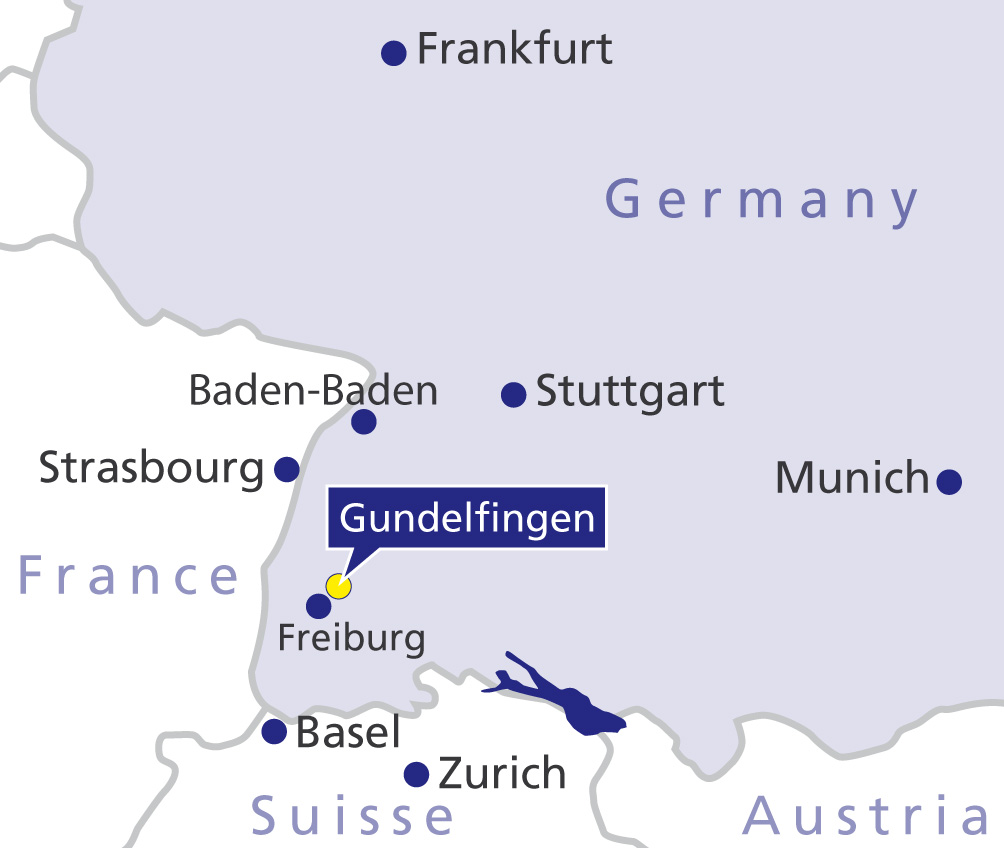Hip Resurfacing: Bone Preserving Treatment (Birmingham Prosthesis/McMinn-Implant)
Fact Sheet: Hip Resurfacing (McMinn-Prosthesis)
- Hip surface replacement: preserving the femoral bone
- Inpatient treatment following resurfacing: 5 days
- Inpatient or outpatient rehabilitation in Germany: 10–14 days is advised
- Earliest flight home: 10–12 days
- Follow-up investigation: X-ray imaging 6 months after surgery, then every 12 months
- Recommended time off work: 6 weeks
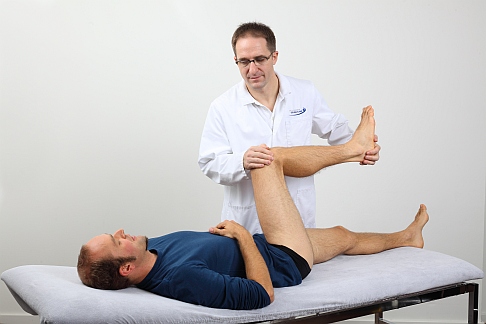 Hip resurfacing (McMinn prosthesis) is a bone preserving procedure. Hip resurfacing has the potential to give a high degree of pain-free mobility, particularly to younger patients with severe hip arthritis, who are otherwise in good health. © Smith&Nephew
Hip resurfacing (McMinn prosthesis) is a bone preserving procedure. Hip resurfacing has the potential to give a high degree of pain-free mobility, particularly to younger patients with severe hip arthritis, who are otherwise in good health. © Smith&Nephew
Hip resurfacing surgery or partial hip prosthesis replaces the damaged cartilage and bone of the hip joint. These implants are designed to restore function to a hip joint affected by osteoarthritis.
Dentists have known for a long time that a small area of damage to a tooth is no longer a reason to replace that tooth, instead, they fill or crown the damaged area. This restorative principle has finally been applied to hip replacement surgery.
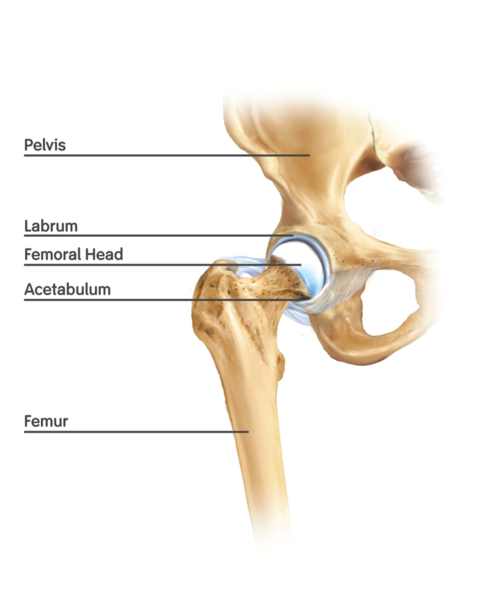 Basic anatomy of the hip joint ©Wikipedia.org
Basic anatomy of the hip joint ©Wikipedia.org
Partial hip replacements or hip resurfacing implants (McMinn prostheses) are now used to repair damaged hip joints.
There is one main benefit of hip resurfacing when compared to total hip replacement. In a total hip replacement, the femoral head (ball at the top of the femur) is always sacrificed, however with the resurfacing approach, the femur (thigh bone) is preserved.
Particularly suitable for patients with good bone structure and normal bone density, this bone-preserving approach to the hip prosthesis, replaces only the diseased parts of the hip, whilst leaving the healthy bones intact.
Hip resurfacing was established in 1994 as the Birmingham or McMinn prosthesis. Currently, 60% of patients enquiring about hip replacement surgery at the orthopaedic Gelenk-Klinik, go on to have the bone preserving, hip resurfacing surgery. In our orthopaedic hip department, hip resurfacing has become one of the standard hip surgery procedures. Since 2004, we have resurfaced hundreds of hip joints every year.
Hip Resurfacing Procedure
Hip resurfacing surgery or partial hip prosthesis replaces the damaged cartilage and bone of the hip joint. These implants are designed to restore function to a hip joint affected by osteoarthritis.
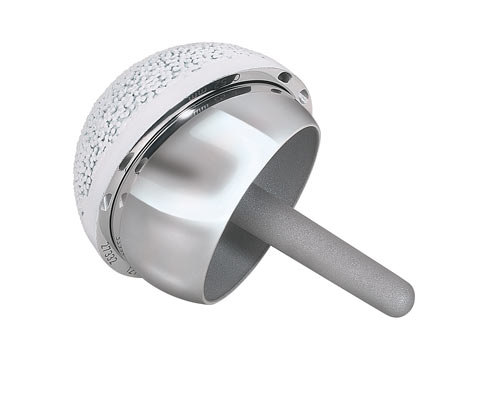 The original McMinn Prosthesis of the Birmingham hip type from Smith&Nephew has been available since 1994. More than 145.000 patients have received this implant successfully. The product’s reliability and safety are unmatched by any other prosthesis. © Smith&Nephew
The original McMinn Prosthesis of the Birmingham hip type from Smith&Nephew has been available since 1994. More than 145.000 patients have received this implant successfully. The product’s reliability and safety are unmatched by any other prosthesis. © Smith&Nephew
At the Gelenk Klinik, we only perform hip resurfacing surgery using the original Smith & Nephew implant, this implant has been proven successful in clinical studies involving a total of more than 145,000 patients since 1994. The standard of quality and reliability has not been matched by any other type of prosthesis for hip resurfacing currently available.
Hip resurfacing - surgical procedure
If the femur (thigh-bone) is still stable and viable, the femur will be preserved. Only the damaged head of the femur is reshaped and crowned by an artificial (metal) femoral head.
As part of hip resurfacing, the damaged cartilage and bone are also removed from the hip socket and a new metal shell is pressed in place, to form an artificial socket. The new ball and socket components are then rejoined to form the new hip joint. Ceramic components may be used in the case of metal allergy in patients and for endurance athletes, for whom there is a high likelihood of the artificial joint wearing out over time.
Hip resurfacing for younger patients
Cases Recommended For Hip Resurfacing
- Hip damage after accidents
- Congenital dysplasia of hip joint
- Femoral head necrosis following an accident or tumour
- Patients of a relatively young age (younger than sixty)
- Patients with CAM-impingement of hip joint
Hip resurfacing surgery is particularly beneficial for younger patients.
Hip resurfacing preserves the femoral head. This preserves the patient's natural range of motion and proprioception. The McMinn prosthesis is renowned for its natural feel. Within a few months of the resurfacing procedure, most patients find it difficult to tell which of their hips has been replaced by the McMinn prosthesis.
Reasons for excellent results in hip surface replacement
What are the factors contributing to excellent results in hip joint resurfacing surgery? The hip centre at the Gelenk-Klinik provides expert diagnosis, including the most advanced imaging facilities in modern orthopaedics.
How do we achieve excellent results with hip resurfacing?
- We use the most thoroughly tested and reliable materials for hip resurfacing.
- We do high-resolution ultrasound investigation that shows the condition of the soft tissue.
- We screen the bone density and check for osteoporosis.
- We assess the general health and surgical risks.
- We use digital X-rays for low radiation exposure and high-resolution images.
- We provide advanced MRI imaging including detailed soft tissue and cartilage examination.
- Our doctors are experienced hip specialists.
Surgical routine and the experience of the hip surgeon are the basis for excellent results in hip resurfacing surgery. The quality and longevity of a hip replacement depends largely on the skill and experience of the hip specialist. The Orthopaedic Gelenk-Klinik has a dedicated orthopaedic hip surgeon as head of the hip department.
Rehabilitation Following Hip Resurfacing
The patient is mobilised the day after the resurfacing procedure, which is possible because hip resurfacing can be performed without cutting the femoral muscle. Five days of in-patient rehabilitation are recommended, followed by approximately fourteen days of out-patient rehabilitation.


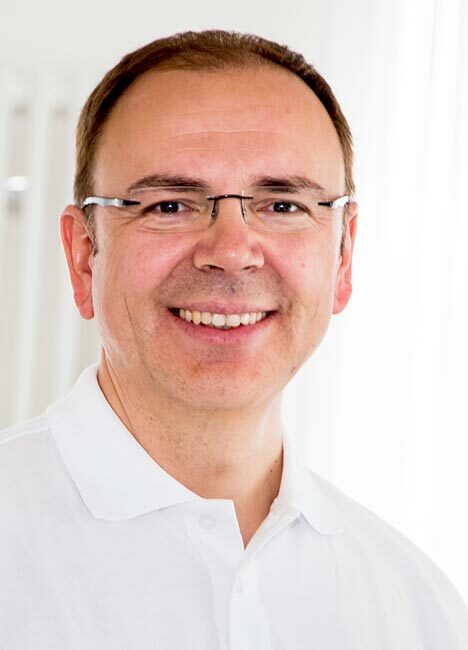 Dr. Martin Rinio, MD, Orthopedist, Hip-Surgeon and Trauma Surgeon
Dr. Martin Rinio, MD, Orthopedist, Hip-Surgeon and Trauma Surgeon